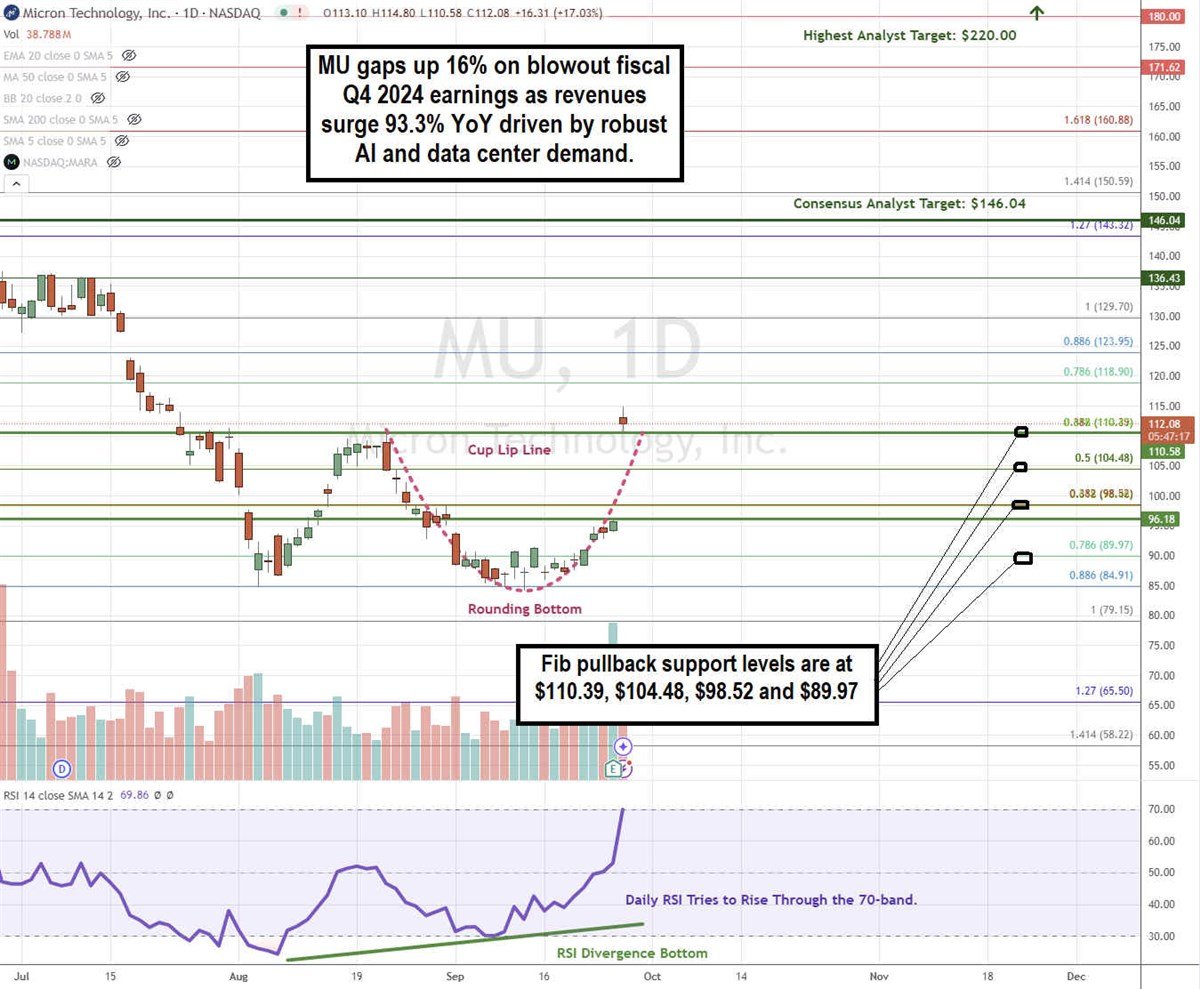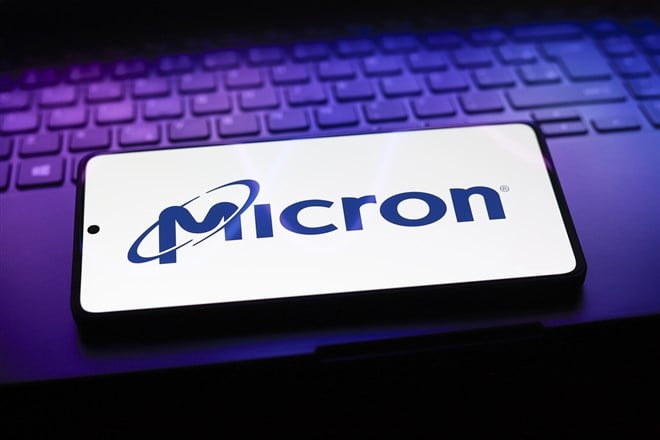Ticker Reports for September 26th
Rocket Lab Stock Soars: Should Investors Chase the Rally?
Rocket Lab USA Inc. (NASDAQ: RKLB) shareholders recently saw RKLB stock hit a new 52-week high of $8.98 per share. As of this writing, it’s pulled back a little to $8.69 per share but is still one of the best-performing stocks in 2024 and over the last 12 months. Many analysts believe that RKLB stock is a long-term buy, but is this a stock for investors to chase at this price?
Rocket Lab is one of the top names in the red-hot space economy. Many companies like Space-X and Rocket Lab aim to be an end-to-end space company that can help customers build the infrastructure needed to make space travel a common reality. Rocket Lab generates revenue from its launch business and its space services business, which account for about 70% of the company’s current revenue.
The bullish case can begin with the idea that Rocket Lab is still standing. That can’t be said for other companies in this space. However, it’s also important to note that the company isn’t turning a profit...yet. That makes it difficult to give the stock an accurate valuation.
Launch Activity Has the Stock Ready for Liftoff
The current reason for Rocket Lab’s stock's performance comes from its product launches. On September 20, Rocket Lab successfully launched its 53rd Electron rocket. Electron is the company’s flagship product, designed for small satellite launches, for which there is massive demand. Rocket Lab estimates that by 2030, there will be demand for over 10,000 satellites to be launched.
The Electron is only the beginning. The company is also developing its Neutron rocket, which is designed to handle medium payloads. This will open a new revenue stream for the company.
That will be a key factor in addressing the one issue that could be holding Rocket Lab stock from going “to the moon.” That issue is the lack of profitability and negative free cash flow. This isn’t unusual for a company like Rocket Lab, which is still in the growth stage. The company’s proven track record will ensure that it will be able to borrow capital regardless of what’s happening with interest rates.
Don’t Discount the Short Interest Factor
RKLB stock has been one of the best-performing stocks over the last 12 months, climbing 103.3%. The stock is also up 55.8% in 2024, and investors who bought the dip in March have received an even larger gain.
Gains like that in an emerging growth stock like Rocket Lab brought out the short sellers. Short interest in RKLB stock is 18.7% of the float and has climbed 2.12% in the last 30 days. That means investors shouldn’t discount the idea that some of this recent rally may be due to short covering.
To support that thinking, on September 23, 2024, Cantor Fitzgerald reiterated its Overweight rating on RKLB stock and maintained its $7 price target. That’s above the consensus price target of $6.86, but it’s nearly 20% lower than the stock’s current price.
Moving Forward With RKLB Stock
Rocket Lab is one of the leading names among aerospace stocks, and there is a reason to believe it’s a long-term buy. However, it looks more than fairly valued at $8.82 per share, which is its price at the time of this writing. That said, if you were an investor in RKLB stock when it first went public, you may still be sitting on a loss. However, if you bought the stock after March 2022, you’re likely sitting on a profit.
If you’re approaching RKLB as a long-term investment, you could take some profit, but there’s nothing to suggest you should abandon your current approach. Holding RKLB stock and waiting for the next dip is a sound strategy.
But what if you’re looking to trade the stock? The Rocket Lab Options Chain on MarketBeat shows the heaviest call activity around $10 and the heaviest Put activity around $9.50 over the next 30 days. That means this rally could still have a 10% to 15% upside.
Thirty days also nearly track with the company’s next earnings report on November 7. At that time, investors may better understand Rocket Lab’s path to profitability.
Jeff Bezos Just Humiliated Elon Musk
The Next Nvidia?
Wall Street legend has just uncovered one tiny Maryland company that could become the next Nvidia. Few in the media are talking about this story yet… but in the next 6 months that's all they'll talk about.
KB Home Slips After Earnings: What's Next for Homebuilders?
The economy typically has three leading industries that investors can watch closely when trying to figure out the potential future of the stock market. Of course, consumer discretionary is a big part of this mix, as the United States economy is increasingly made up of consumer trends and debt. Following these consumer trends is the mortgage market, which is an extension of the real estate sector.
A third industry just as connected to the rest is the transportation sector, particularly the trucking industry, as it is called upon to deliver the products ordered based on higher consumer activity and demand.
Today, investors have a good idea of what the consumer sector is doing after consumer sentiment readings came in at their weakest since 2021, so now it is time to gauge the housing market.
This is where homebuilding stocks like KB Home (NYSE: KBH) become as important as ever, especially as the company just announced its latest set of quarterly earnings figures.
Investors can probably guess that the figures weren’t that great based on the fact that the stock traded lower by 5.3% the day after announcing its quarterly earnings, but the implications for the rest of the stock market are just as important.
Why the Housing Industry Could Be in Trouble: KB Homes Stock Numbers Follow the Trend
Investors can gauge the market's feelings about a particular industry by comparing its average forward P/E valuations against the broader S&P 500 index. In this case, those at Goldman Sachs believe the S&P 500 will trade at about 18.0x forward P/E ratio for the next 12 months, the benchmark for investors to work with now.
On the other hand, the homebuilding industry trades at an average valuation of 11.5x forward P/E ratio. This is a discount of up to 36% from the market expectation, and typically, markets are willing to discount industries when they believe they are fundamentally set up to underperform the rest.
The underperformance may result from the average home price being up to 35% above what it was before the COVID-19 pandemic, pricing out many would-be homebuyers. The situation worsens when investors account for the current mortgage interest rates hovering near 6.5%.
The problem is that, despite recent interest rate cuts from the Federal Reserve (the Fed), most homes are still too expensive compared to the average salary today, so new demand won't come online for a while. Investors can see this trend reflected in the falling housing starts, home building permit numbers, and the mortgage market index hitting a 1996 low.
KB Home stock is not immune to this environment, so investors will notice a flat order backlog for the past 12 months in the company's earnings press release. In addition, the home-selling gross margin contracted down to 20.6% from 21.5% a year ago, signaling further weakness.
Speaking to demand and current sentiment for new homes, the overall cancellation rate came in at 15%, above the industry's 6% to 8% average, showing capitulation from the buyer side. The final blow came in the company's backlog, which totaled 5,724 this quarter compared to 7,008 one year ago.
This might have caused the stock's 5.3% down day despite reporting higher earnings per share (EPS) and revenue since these key performance indicators (KPIs) are ultimately more important for the future. However, KB Home is not alone in this trend; peers are suffering, too.
Wall Street Analysts Predict Downside for the Housing Industry
Here is what Wall Street analysts considered when deciding to keep their consensus price target for KB Home at $77.3 a share. This implies as much as a 6.6% downside from where the stock trades today despite the sell-off. Inside KB Home’s financials, investors will notice that this shift in backlog inventory caused operating cash flows to crash.
Going from a net inflow of $608.7 million a year ago to $89.9 million this year means EPS is overstated today. Knowing that this is likely becoming an industry-wide issue, price targets on competitors like Toll Brothers Inc. (NYSE: TOL) and D.R. Horton Inc. (NYSE: DHI) have also started to come down.
For Toll Brothers, Wall Street analysts expect the stock to drop to $145 a share, or 3.5% below today’s price. More than that, it looks like bears are starting to gear up to oppose this company and the negative trends affecting the industry today, as Toll Brothers stock’s short interest increased by 7.9% in the past month alone.
Looking over at D.R. Horton, the story doesn’t improve. Wall Street has landed on a consensus price target of $183.3 a share for this homebuilder, which implies a downside of 2% from today’s price. Bearish traders also picked up the pace on this name by increasing the stock’s short interest by 12.5% over the past month.
Shift to Defensive Stocks as Housing Sector Shows Weakness
Based on the evidence, it’s clear the housing market faces significant headwinds, with rising interest rates and inflated home prices limiting demand. Homebuilding stocks like KB Home, Toll Brothers, and D.R. Horton are showing signs of struggle, as seen in their lower backlogs, declining margins, and increasing short interest.
For investors, this suggests it may be wise to avoid the housing sector for now and consider shifting toward more defensive, less cyclical industries that are better positioned to weather the current economic environment.
Alex's "Next Magnificent Seven" Stocks
Today Alex Green is releasing his new breakdown of AI's "Next Magnificent Seven."
So please make some time to watch it.
Micron Stock Soars as AI Demand Fuels Big Q4 Earnings Beat
Micron Technology, Inc. (NASDAQ: MU) proved the doubters and analysts wrong with a Babe Ruth-style homerun earnings report that saw revenues nearly double YoY driven by the artificial intelligence (AI) boom. The irony is that at least three analysts downgraded, trimmed estimates or lowered price targets for Micron ahead of its fiscal fourth-quarter earnings report, sending shares as low as $84.12 on Sept. 12, 2024. MarketBeat analysts thought otherwise, citing the 4 Reasons to Buy the 44% Price Drop and looking to Capitalize on Micron’s 24% Drop.
Micron's solid AI-driven demand-powered earnings report helped lift the computer and technology sector, driving shares of memory device makers like Western Digital Inc. (NASDAQ: WDC) and Seagate Technology Holdings plc (NASDAQ: STX) higher.
Micron Finally Reaps AI Boom Benefits With Strong Q4 Results
The market had been waiting for Micron to show evidence of benefitting from the AI boom, such as NVIDIA Co. (NASDAQ: NVDA) or Oracle Co. (NYSE: ORCL), as illustrated in their earnings blowouts. Yet, prior earnings and guidance were tepid and in line. This prompted many downgrades citing concerns that AI alone couldn't help slumping spot DRAM prices and inventory glut hurting its non-AI business like PCs and smartphones.
Micron's fiscal fourth-quarter of 2024 earnings report put all doubts to rest. The company reported EPS of $1.18, beating consensus estimates by 7 cents. Revenues surged 93.3% YoY to $7.75 billion, crushing consensus estimates by over $100 million. Non-GAAP gross margin rose to 36.5%, up from 28.1% sequentially.
AI and Data Centers Stole the Show
Robust AI demand fueled the surge in its data center DRAM products and industry-leading high bandwidth memory (HBM) chips, which have already been booked until 2025. However, Micron's recently announced acquisition of 2 Taiwan factories was meant to boost its capacity for these red-hot chops. HBM chips are tailor-made for AI applications like computer vision, natural language processing (NLP), and computer vision.
Micron Technology CEO Sanjay Mehrotra didn't downplay his excitement, stating, “We are entering fiscal 2025 with the best competitive positioning in Micron's history. We forecast record revenue in fiscal Q1 and a substantial revenue record with significantly improved profitability in fiscal 2025.” The company hit record NAND revenue led by data center and SSD sales, which exceeded $1 billion for the first time.
Micron Ups the Ante and Raises Guidance
Micron Technology raised its fiscal first-quarter of 2025 EPS to $1.66 to $1.82 versus consensus estimates of $1.52. First-quarter revenues are expected to be between $8.50 billion and $8.90 billion, crushing the $8.27 billion consensus estimates. Non-GAAP margin is expected to be around 39.5% +/- 1%.
Micron Technology EVP Manish Bhatia notes that the demand for traditional servers will continue to grow and improve as IT software deployment continues. Modest unit growth is expected for general server growth. However, AI servers are expected to be robust in 2025 as AI momentum continues. Micron has strengthened its position with HBM growth in AI servers with its high capacity 128 gigabyte DIMMs being used in AI servers for training and inferencing. Both enterprise AI and cloud servers are driving demand.
MU Stock Completes a Cup Pattern
A cup pattern forms on a swing-high lip line that falls to a swing-low, forming a rounding bottom that rises back up to retest the cup lip line. From there, a handle may form on a pullback or a continuation above the cup lip line, which acts as a new floor support.

MU formed its cup lip line around $110.39 and sold off to the $84.91 swing low, and the multiple pre-earnings report analyst downgrades and price cuts. MU rose to the $96.18 level driven by the divergence bottom formed on the daily RSI heading into its fiscal Q4 2024 earnings release.
The solid report triggered a price gap to the $110.58 gap fill level, competing with the cup pattern. MU will either use the cup lip line as a floor support and trend higher or pullback to form a handle, forming a potential cup-and-handle breakout if it successfully surges back up through the cup lip line. RSI rose to the 70-band. Fibonacci (Fib) pullback support levels are at $110.39, $104.48, $98.52, and $89.97.
Micron Technology’s average consensus price target is $146.04, and its highest analyst price target is $225.00. Analysts have given it 25 Buy ratings, one Hold rating, and one Sell rating.
With MU’s large gap following earnings, it’s best not to chase. Bullish investors can buy on pullbacks using cash-secured puts to take advantage of the elevated premiums at the fib pullback support levels to buy the dip and write covered calls to execute a wheel strategy for income in addition to the 0.41% annual dividend yield.






0 Response to "🌟 Rocket Lab Stock Soars: Should Investors Chase the Rally?"
Post a Comment